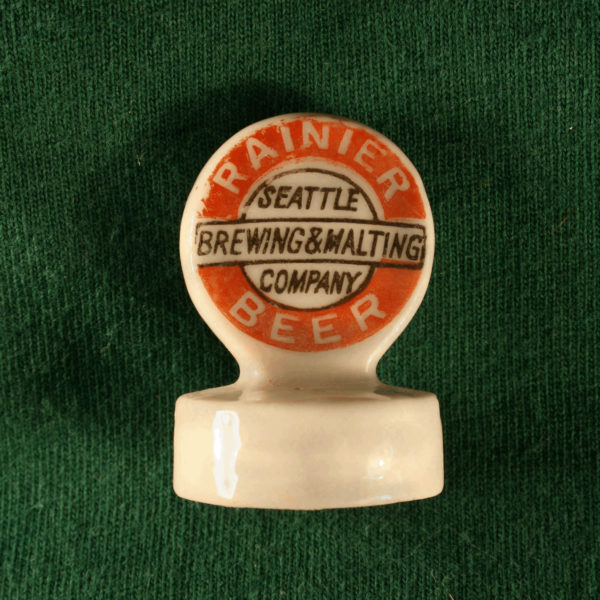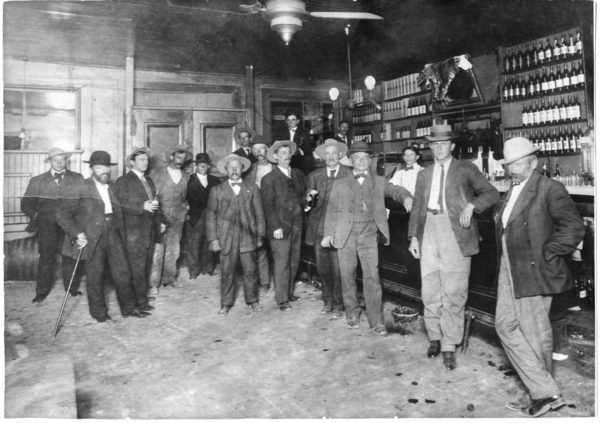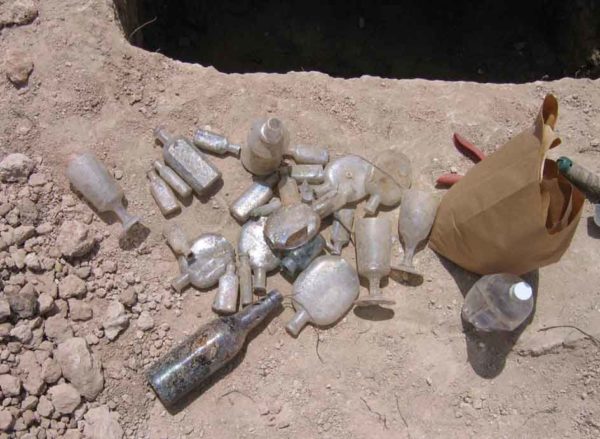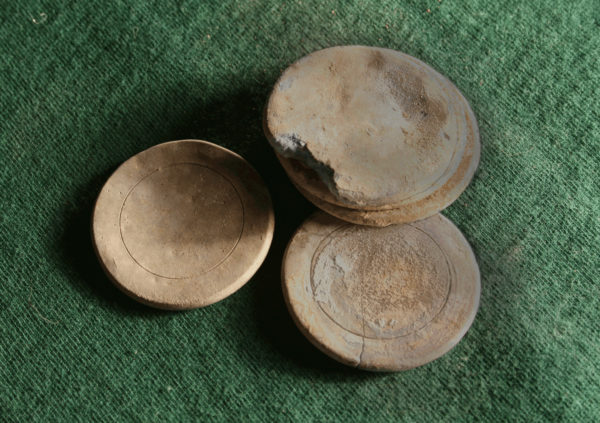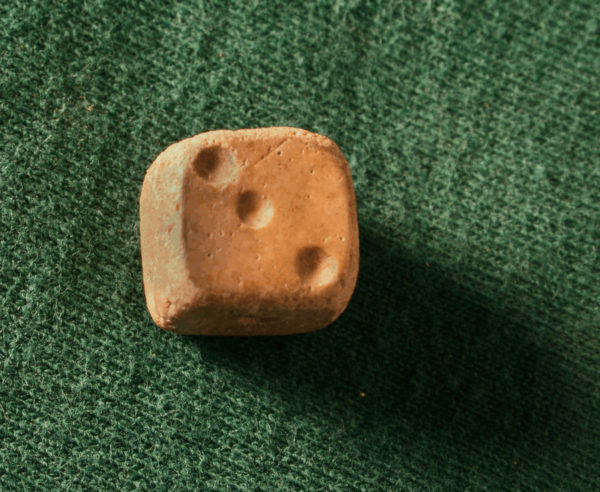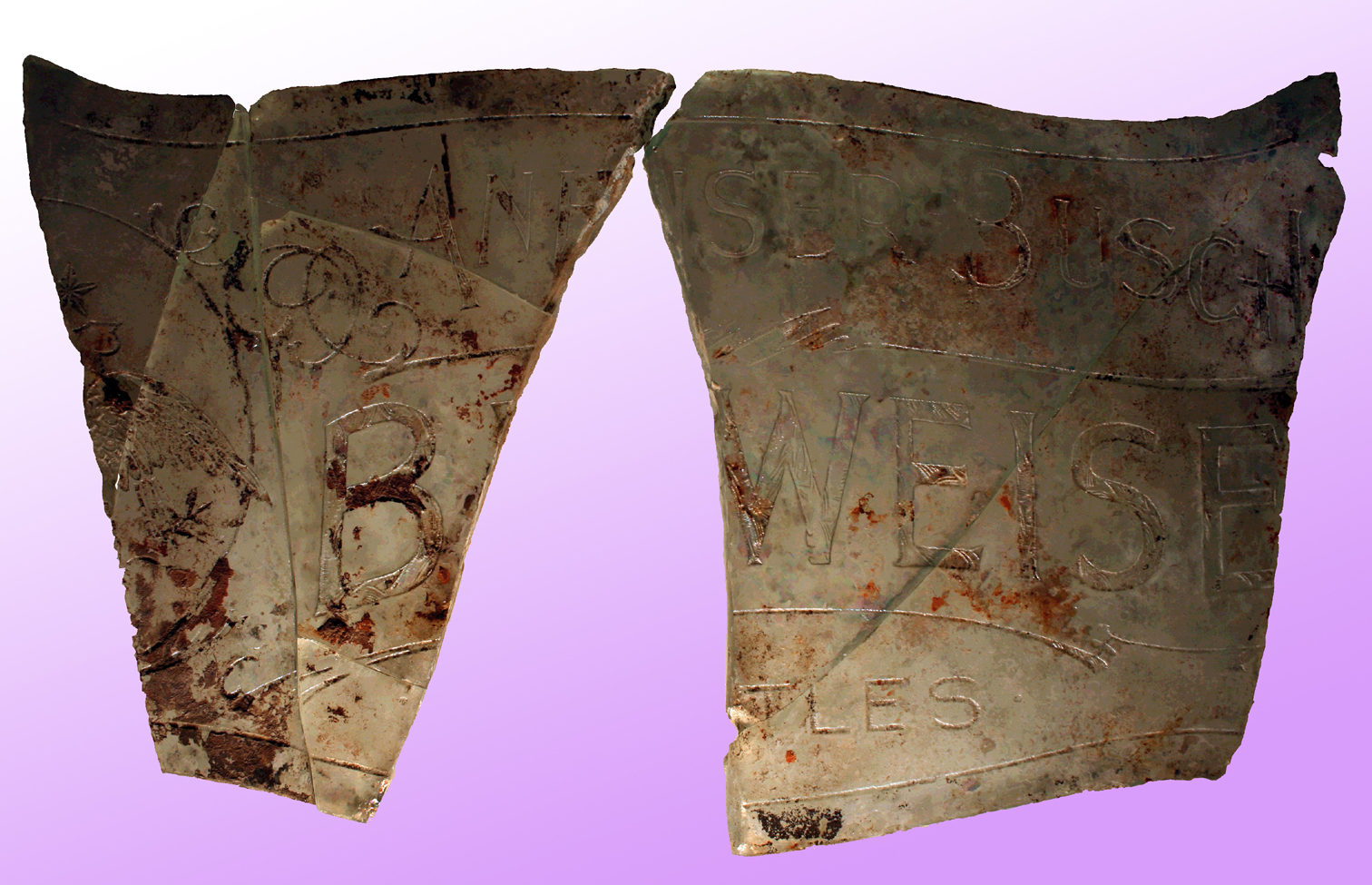
A Cooling Drink of Beer or a Bracing Glass of Something Stronger: A Short History of Alcohol in Tucson
Desert Archaeology’s historical archaeologist, Homer Thiel, is back this week with a look at adult beverages in the Old Pueblo’s past.
Wandering through downtown Tucson, you may come across the Independent Distillery at 30 S. Arizona Avenue, located in a historic building across the alley from the under-construction AC Marriot Hotel (where Desert Archaeology uncovered scandalous fire chief Jack Boleyn‘s well). The brewing and distilling of alcoholic beverages is undergoing a renaissance in the Tucson area, with numerous small, independent businesses opening in the last few years. Many new bars have also opened along the Sun Link streetcar route that runs through historic districts we have investigated.
Alcohol has a long history in the Sonoran Desert. Tohono O’odham people have brewed saguaro fruit wine in the summer for centuries, drinking large quantities during a rain dance ceremony. The people living in the Presidio San Agustín del Tucson made mezcal from agave harvested around the fortress. Among the goods imported overland in freight wagons driven from Yuma by Solomon Warner in early 1855 were bottles of alcohol. Alexander Levin and Julius Goldtree opened the Pioneer Brewery in 1869, producing the first beer in Tucson. By the 1880s, there were over a dozen saloons operating in the community.
Arizona became a state on February 14, 1912. Two years later, on January 1, 1915, voters approved Prohibition, which ended the sale of alcohol in the state. The measure passed with strong support from female voters, who had gained voting rights when statehood was achieved. Men packed saloons on New Year’s Eve in 1914, having their last legal drinks. Soon many of these men traveled south to Nogales, Sonora, crossing the border to enjoy beer or hard liquor. Bootleggers produced alcohol, including in the historic well building at Steam Pump Ranch in modern-day Oro Valley. Local law enforcement was kept busy searching out and raiding speakeasies and illegal stills. Prohibition ended in 1933, and bars soon re-opened throughout the downtown area.

Fragments of hand-painted saloon front windows, one with the letters N.Y. and the other with the letters FOO (for FOOD) (photo by Robert Ciaccio).
Desert Archaeology projects have helped document the use of alcohol in the community. We studied the area south of West Silverlake Road in 2012 and 2013. This was the location of a historic Rowlett’s Flour Mill, dating to 1859, the Silverlake Hotel, and Tucson’s second brewery, the Excelsior. Unfortunately, no physical traces of these buildings survived flooding of the Santa Cruz River and modern use of the area.
Archival research revealed the story of the Excelsior Brewery, opened in 1879 by German immigrant Conrad Mundelius (1845-1934), which by all accounts produced an excellent beer. The Arizona Weekly Star reported, “Near the lake you find also the Excelsior brewery, owned by Mr. Mondelius, where you can obtain a foaming tankard of beer to wet the inner man, as soon as the outer man has been wiped dry. Mondelius’ beer is just way up and anyone who tries it will say so.” Mundelius operated the brewery for five years, surviving two arson events, before selling out and eventually moving to California.
In 2005, Desert Archaeology conducted fieldwork on the east half of Block 83, at the northwest corner of North 5th Avenue and East 10th Street in downtown Tucson. Now an empty parcel between the MLK Apartments and the Hotel Congress patio, the project area included the location of the Cactus Saloon, which operated between 1889 and 1910, and the Depot Park Beer Garden and Ramona Saloon, which were in business from about 1890 to 1908. These were across from the Southern Pacific Depot (now the Amtrak station and Maynard’s Market), and catered to train passengers and local residents. An 1889 advertisement in the Arizona Daily Citizen stated: “At the Cactus saloon, near the Depot, you can always get sandwiches of all kinds, fresh made ham, cheese, sardines, and sausages.” Customers could also get cigars, in addition to a variety of alcoholic beverages.
A photograph of the Cactus Saloon interior found at the Arizona Historical Society in Tucson shows male customers standing around the bar, with spittoons lined up next to the foot rail. A jaguar hide was draped over a mirror above the bar. Ceiling fans helped keep imbibers cool during the summer.
We excavated a privy pit partially filled with trash discarded from the Cactus Saloon. The pit was just over 6 feet long, 3 and a half feet wide, and almost 9 feet deep (we excavated the top five feet, stripped the surrounding area down, and then excavated the rest following OSHA regulations). Saloon-related artifacts found in the privy included pieces of the saloon front window, an Anheuser-Busch mirror, shot glasses, goblets, beer steins, alcoholic beverage bottles, and many shoe polish bottles, suggesting a shoe shine stand may have been present in the business.
Archival research identified dozens of saloons in Tucson. Many served food along with drinks, providing single men, with their limited ability to cook, a cheap, filling meal. Few women were found in saloons, and many had policies banning them. Ordinance No. 122, enacted in April 1899, banned “any prostitute, courtesan, or lewd woman… in any saloon… to sing, recite, dance, play on any musical instrument, give any theatrical or other exhibition, drink, carouse, serve as waitress or barmaid.”
Men could still find entertainment in saloons. Musicians played instruments, sometimes accompanied by singers. In 1911 a machine at the Double Stamp was purported to have “pictures [that] were revoltingly and indescribably obscene.” Of course, the mayor and city councilmen immediately marched over to the sheriff’s office to view the pictures.
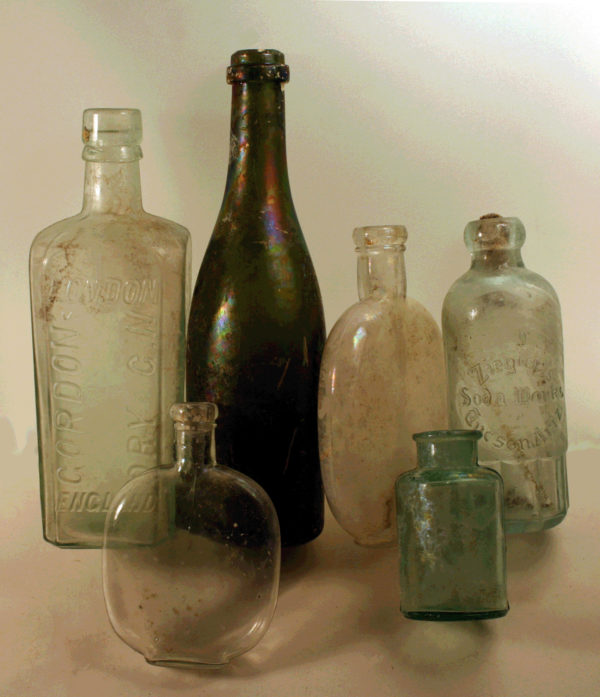
Six bottles from the Cactus Saloon outhouse. Back row: Gordon’s dry gin, wine or champagne, a pumpkin seed flask, and a Ziegler’s Soda Works. Front row, another pumpkin seed flask and a shoe polish bottle (photo by Robert Ciaccio).
Pool tables were present in many of the establishments. Gambling—poker, faro, slots, craps, blackjack, and roulette—was conducted in saloons, even after it was banned in 1905. Occasionally fights broke out, and in 1898 the barkeeper at the Cactus Saloon shot and killed Ed Jones, who had threatened to smash him with a cuspidor.
These and other stories about Tucson’s Territorial-era saloons can be found in our completed report, available online as a free PDF. The two projects discussed here were funded by the City of Tucson and Pima County.


